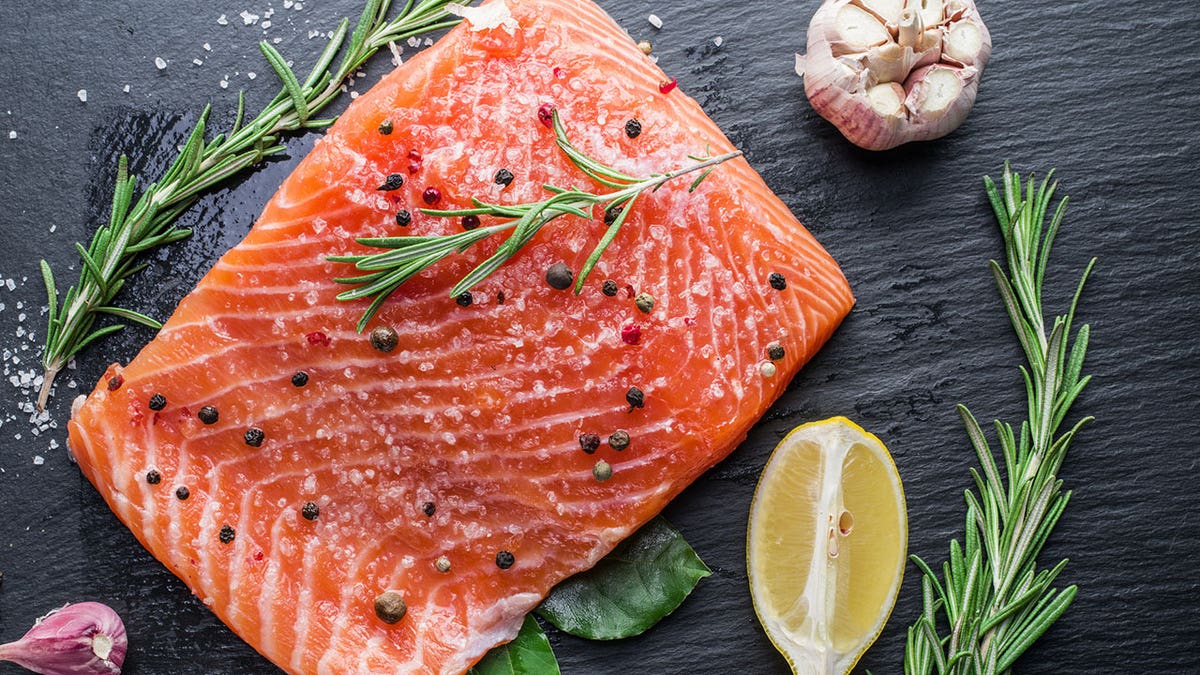
Yes, one salmon is more expensive than the other, but that's not the only difference. (iStock)
Salmon are kind of like onions.
No, not because they make you cry. )Hopefully salmon don't make you cry._ They're similar because you can buy onions that are grown on a farm, but you can also find and harvest onions in the wild, too. Both onions, both very different things. The same goes for salmon.
When you buy fish at the market, you will most likely see some labeled "farm-raised" and some labeled "wild" or "wild-caught." Sure, they're both salmon, but they're very different things. What is the difference, you ask? Great question.
Here's what to expect from salmon, whether you go the farm-raised or wild-caught route:
Farm-Raised Salmon
What does that even mean? That’s a good question. In the broadest sense, it means that it was raised in some kind of aquatic farming operation, not the wild. But salmon farms vary in size, location, breeding practice, and just about everything else. Farmed salmon will differ in the same way that a carrot farmed in New Jersey differs from a carrot farmed in California.
What does farm-raised salmon taste like? Farm-raised salmon is what people tend to think of when they think of salmon. It’s generally fatty, mild in flavor, and a soft pink-orange hue. It has plenty of stripe-y striations of fat, which creates those big fleshy flakes that separate easily with a fork.
How do I cook this stuff? The beautiful thing about farm-raised salmon is that it can take a beating. It’s a lot harder to overcook than wild salmon, thanks to that high fat content. You can cook farm-raised salmon to medium rare (maybe slow-roast it), but you can also take it further, without being concerned about the fish drying out quickly.
How do I buy this stuff? As far as sustainability is concerned, buying farm-raised salmon can be tricky because there aren’t rigorous standards that regulate salmon farms. If you can, ask the person selling you fish what kind of farm it came from. Salmon raised in densely populated net-pen aquacultures (large, open nets in the ocean) are generally pretty bad for the surrounding environment. Look for salmon raised in low-density net-pens (fewer salmon than in a large net-pen), which have less of an impact on surrounding ecosystems and on the salmon themselves. Closed tank aquacultures (completely cut off from open ocean) have zero impact on the environment, so we like those too. Look for sustainably-raised brands like Verlasso or Skuna Bay Salmon.
Wild-Caught Salmon
What does that even mean? Well, wild salmon, as you’d probably expect, is caught in the wild. Fisherman take their boats, usually in places on the Pacific Ocean like Alaska or New Zealand, and head out to catch these fish in their natural habitat. This means that when you buy wild salmon, you’re (usually) supporting smaller fishing operations in smaller towns around the world. We’re into that.
What does wild salmon taste like? The reason that people buy and cook wild salmon is for its flavor. A happier, healthier, free-roaming fish delivers more salmon-y flavor and color. The color will be more intense and vibrant than that of the farm-raised stuff — more red-orange than pink — as will the flavor, which will be a lot more savory and complex.
How do I cook this stuff? Wild salmon tends to be leaner than farm-raised. The actual fat content can vary a lot from species to species, but in general wild-caught salmon needs to be cooked more carefully — overcook it even slightly, and it can dry out and become tough and chalky. It’s very important to cook wild salmon to a true medium rare, otherwise you’ll be chewing on a squeaky piece of dry fish.
How do I buy this stuff? Talking to your fish monger (or whoever works at the fish counter at your supermarket) will help. Ask what species of salmon are available, where they were caught, and what the fishing operation is like. King salmon (also called Chinook) is the best of the best in terms of flavor and fat, but it’s extremely expensive. Wild Sockeye or Coho salmon are better fish to get comfortable with. Spring for the good stuff once you have your medium-rare cooking technique down pat.
